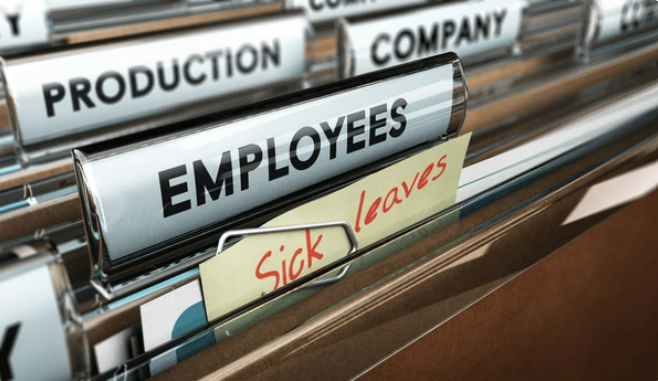✨ Health insurance, now in PayFit - learn more
💷 All the rates & thresholds you need to know for 25/26...right here
✨ The Payroll Journey: Start, Scale & Succeed Globally - learn more
✨ Health insurance, now in PayFit - learn more
💷 All the rates & thresholds you need to know for 25/26...right here
✨ The Payroll Journey: Start, Scale & Succeed Globally - learn more

More and more, flexible working arrangements are becoming the norm for organisations. That includes policies like KIT days (or Keeping In Touch days) and SPLIT days (Shared Parental Leave In Touch), designed to keep employees on parental leave engaged with their job roles, and in contact with their colleagues.
While not a statutory right or requirement, KIT days can be a helpful way for employees to stay in the loop, and enjoy a smoother transition on their eventual return to work life.
Let’s face it: it can be daunting for any worker to simply pick up where they left off after an extended period of leave. Having a few days, perhaps one day a week for several weeks, where they can check in and catch up with colleagues and managers, can make the return to work a little more palatable (read less Sunday Scaries).
Let’s learn a little bit more about what KIT and SPLIT days are, and what your rights and responsibilities are as an employer in providing this service.
This funky sounding acronym stands for “Keeping in Touch” days. A KIT day gives an employee on maternity or adoption leave the opportunity to go back into work and pick up their normal service or duties.
While adorable, bringing ‘Baby’ into work to meet colleagues doesn’t count as a KIT day — your employee still needs to do some kind of work. But the parameters around how much time they must spend working and when to come in are flexible — they’re down to you and the individual worker to agree on.
The worker is paid at their usual rate for these hours worked, and allowed to resume their leave period again afterwards if they choose.
As mentioned at the start, employers are not obliged to offer KIT days to their employees. In other words, KIT days are not an automatic or ‘statutory’ workplace right, nor are they something an employer can force on specific individuals. It’s also important to treat workers taking these days just as you would any other at your organisation.
While KIT days apply specifically to one parent (say a mother on Maternity Leave) SPLIT days, or Shared Parental Leave In Touch days, apply to employees on Shared Parental Leave. In essence, SPLIT is very much the same as KIT, though slightly more flexible. Parents on shared leave are entitled to receive up to 20 SPLIT days without ending their leave period.
It’s also worth noting that SPLIT days should be used in addition to KIT days, and that KIT days can be carried forward into Shared Parental Leave. Although they’ll need to stop their Maternity Leave first, before starting Shared Parental Leave, in order to use their 20 SPLIT days.
During their Parental or Adoption leave, employees can work up to 10 Keeping In Touch days. That is, without bringing their paid leave period to an end. For Shared Parental Leave, that allowance is higher — employees are entitled to work up to 20 days without bringing their leave to an end.
While some employees might decide to take the odd KIT day here or there, others may use them as a way to resume work part-time (say by coming back into the office one day a week over several weeks). This provides a gradual return to the workplace.
KIT days are also a great way for employees to:
Stay in contact and socialise with close colleagues
Receive updates on any changes that may have come up during their leave
Offer additional support on ongoing projects when other members of the team take leave
Ask any questions they may have about their leave, pay, role, or returning to work
As we covered before, KIT days are not a statutory right or requirement, therefore there’s no specific guidance for what rates to pay.
However, the rate you pay needs to be at the very least in line with minimum wage. It should also be agreed on with the employee in question before they start to come in for work on their KIT days.
Most employers will happily pay for a full day’s work so that retention or engagement doesn’t drop. Maternity Action backs this up as good practice, given the employee will likely incur the same expenses they usually would (e.g. travel and childcare costs) for these types of days.
Shared Parental Leave Guide
They can be. One option is to top up the employee’s daily rate of Statutory Maternity Pay. Alternatively, KIT days can be paid in addition to SMP. It’s up to you as the employer to define these payment terms in your maternity policy.
As mentioned before, you’ll want to make sure the employee is at the very least receiving minimum wage for the hours they work (that’s excluding the SMP daily rate as calculated below).
For example: If the employee works two hours, and you top up their SMP to a full day’s pay, the additional pay needs to equate to more than minimum wage for two hours worked. If you only top up the SMP for these two hours worked, this would take you below minimum wage.
To determine the daily rate for SMP use the following formula.
Weekly rate of 172.48 / 7 days = SMP daily rate
Employees don’t have to provide a full 8-hour day’s service for it to be classed as a KIT day. If they come to work, even just for a few hours, they can count this toward their allowance. This is useful, say, if an employee wants to come in to do an hour’s training or just to catch up with their manager.
As an employer, it’s important not to force an employee to work their full daily hours over the ten days.
By now, you probably have a sense of some of your responsibilities that comes with providing KIT or SPLIT days. Here’s a quick round-up.
As KIT and SPLIT days are voluntary, employers must not compel employees to work on these occasions.
Employees must also be given adequate notice for these days, and not reprimanded for deciding not to show up on these days.
When it comes to SPLIT days, employers must ensure employees are, in fact, eligible for this type of parental leave and meet requirements for SPLIT day entitlement.
Employers must also provide employees with written confirmation of their SPLIT day arrangement, and adjust pay accordingly.
Just as any other normal work day, you need to ensure employee health and safety isn’t compromised on these days.
If additional training is required, you’ll need to provide this too.
KIT and SPLIT days can be incredibly helpful for employees. They help those on months or weeks of parental leave to stay connected, refresh their skills, and avoid feeling left out. But in providing these days, there are several responsibilities you need to observe as an employer to ensure employees make the most of them.

KIT (Keeping in Touch) days allow a person on Maternity or Adoption leave to work up to 10 days during their leave period without ending their leave. SPLIT (Shared Parental Leave In Touch) days are designed for those on SPL (Shared Parental Leave), offering up to 20 days. Both arrangements are intended to help ease the individual’s return to work.
No, KIT is not a statutory requirement or right. Using these days is a joint voluntary decision for both the individual and the employer. An organization cannot force a person on leave to come in for working days, nor can a person demand to work them if the organization doesn’t agree. Effective communication between the two parties is therefore essential, as an important part of managing employee relations. For more specific guidance and information on workplace rights, the ACAS website is a valuable resource.
Any amount of work performed on a single day counts as one full day used from the allowance. This applies even if the worker only comes in for a few hours for a training session or a meeting. For example, if they worked for two hours, that counts as one whole day. This flexibility is useful for those returning to their job after several months away, from, for example, SPL.
A person can claim up to 20 SPLIT days when on Shared Parental Leave. These are in addition to the 10 KIT days (which can be carried forward into the SPL). However, to start SPL and be eligible for the associated pay (Statutory Shared Parental Pay, or SHPP), the parent must first stop their Maternity Leave. This is separate from standard maternity leave, which often lasts for many weeks. The UK government’s website has the detailed rules on SPL eligibility.
Since the arrangement is voluntary, an employer should not penalize the worker for going back on a decision to be working on an agreed day. However, adequate notice might be expected. Every case will be different, so clear communication is fundamental.
Payment for KIT days can be complex. It can be paid in addition to SMP or as a top-up to it. Employers must define these payment terms in their maternity policy. The most important rule is ensuring the employee is receiving at least the National Minimum Wage for the hours they have worked. For SPLIT days, the employee would be receiving Statutory Shared Parental Pay (or SHPP), assuming they are eligible. Employers should check eligibility requirements and seek specific guidance if they are unsure.

Our guide for UK employers & HR & Finance managers covers the essentials of statutory sickness pay & best practices for leave and absence management.

Occupational leave is a complicated subject in the UK. Get answers to your statutory sick pay (SSP) and occupational sick pay (OSP) questions here.

Calculate part-time holiday entitlement in 2025-2026. Learn about calculation methods, workers' rights, and recent legislative changes for UK employers.

Understand Statutory Sick Pay (SSP) with our complete guide for UK HR & Finance leaders, covering eligibility, rates, waiting days, forms & payroll processing.

Understand UK Statutory Maternity Pay with our comprehensive guide to help growing businesses navigate SMP eligibility, rates, calculations, & HMRC claims.

Guide for HR & finance leaders of growing UK businesses on managing annual leave in 2026. Covers statutory entitlement, new holiday pay rules...